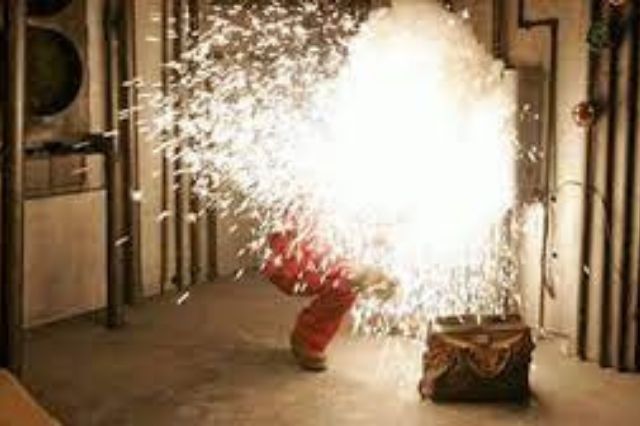Last month we discussed the basics of an Arc Flash and what companies should know about Arc Flash Risk Analysis (Arc Flash Studies). This month we will dive deeper into Arc Flash Compliance.
In discussing arc flash compliance, there are several questions a company should ask:
- Why do I need an arc-flash study performed and continually updated? (Hint: OSHA rule)
- What do I need to be compliant with AF Requirements? (Hint: NFPA 70E)
- How is an arc-flash study performed? (Hint: IEEE 1584)
Arc-flash studies determine the hazard at electrical equipment. They are what determines the data on arc-flash labels that are used to determine what PPE is needed to work on the equipment energized and minimize the injury should an arc-flash occur.
Studies consist of:
- Electrical system data acquisition – requires a SITE VISIT
- Rating and other information from panels, switchboards, transformers
- Breaker/relay settings
- Cable sizes, lengths
- Trip units often covered, so settings would be impossible to gather or even sometimes determine the trip unit type
- Cable sizes – not always sized appropriately, need to verify these
- Utility fault current data and X/R ratios. Need to contact the utility directly to obtain calculated values at service entrance
- Other information needed for IEEE 1584 – 2018 update (details in Next month’s blog)
- Data modeling and analysis – Needs to be done correctly
Options need to be selected appropriately to reflect the latest standards for calculation and PPE determination (i.e. NFPA 70E and IEEE 1584)
Fault clearing times: TCC curves need to be made to determine when the breaker will trip to clear the fault and stop the arc-flash from occurring. This REQUIRES accurate breaker or fuse data (back to correct data collection)
Determination of arc-flash hazard data [incident energy (cal/cm2), working distance and arc-flash boundary at equipment]
Generation of detailed report with all findings and options for mitigation: Mitigation is typically considered optional, but part of our analysis is recommending protective device settings that will decrease the incident energy. If the IE cannot be reduced, we provide an explanation as to why as well as details on how to go about lowering it further if possible
Installation of labels:
It is often somewhat confusing installing labels for our clients, and we like to make sure that each label is installed at the correct location and at an area that is visible to personnel. Sometimes labels are generated and not installed properly, if at all.
Labels should be installed at all equipment “likely to require examination, adjustment, servicing or maintenance while energized” (from NFPA 70E) (panelboards, disconnect switches, switchboards, transformers, transfer switches, generators etc.)
It is important to know the origins of varying safety rules and regulations. This allows for effective clarification and verification and allows an opportunity to be confident in your studies, safety procedures and compliance.
General duty clause: OSHA simply states that employers need to provide a hazard-free workplace. There is no specific reference to the NFPA 70E, however they have issued fines to companies based on not having personnel wearing appropriate PPE as defined in 70E. It is clear that OSHA is using NFPA 70E as a national consensus standard. OSHA expects employers and employees to comply with the provisions of NFPA 70E regardless of whether it has been “adopted” as an OSHA requirement.
OSHA is the “why” aspect of arc-flash studies; along with common decency and a proclivity for employee safety, it is the reason we need to have them performed.
The NFPA 70E requires an electrical safety program, which is defined to include an arc-flash study in addition to other aspects of a safety program (ie employee training, safety plan, Preventive Maintenance & Testing, etc)
NFPA 70E is the “what” aspect of an arc-flash study:
This is the standard that dictates what needs to be done to comply with OSHA’s “why”. This includes performance of an arc-flash study. The goal of which is to determine appropriate PPE for energized work.
How do we determine PPE from NFPA 70E? 70E points to IEEE 1584 to answer this (this is the “how”):
NFPA 70E 2018 130.5(F) outlines two ways to determine PPE. The “table method” and the “incident energy analysis” method.
The table method [130.5(F)(1)] requires knowledge of the available fault current and clearing time of the upstream device (breaker or fuse). This makes general use of the table in place of the IE method impractical in most cases. Some companies and/or engineers use this method incorrectly, as it is difficult to estimate the available fault current and clearing times without having all the pertinent electrical system data.
The Incident Energy analysis method [130.5(F)(2)] involves employing the 1584 standard and is what is most widely used and preferred in the industry (standard Arc-Flash study).
To summarize:
- OSHA calls on the employer to provide a safe and hazard-free workplace. This is the “WHY”
- This requirement, as it applies to electrical safety, is then met by complying with the NFPA 70E standard. The 70E is the “What”
- The NFPA 70E refers to the IEEE 1584 to determine the incident energy levels when using the “incident energy analysis” method (most widely used). The 1584 is the “HOW”
- The IEEE 1584 then points back to the 70E to determine the PPE based on the calculated incident energy levels (cal/cm2). In this sense, the 70E and 1584 both share the “How” aspects of an arc-flash study.
Next month, we will look closer at the IEEE 1584 piece of this puzzle.


